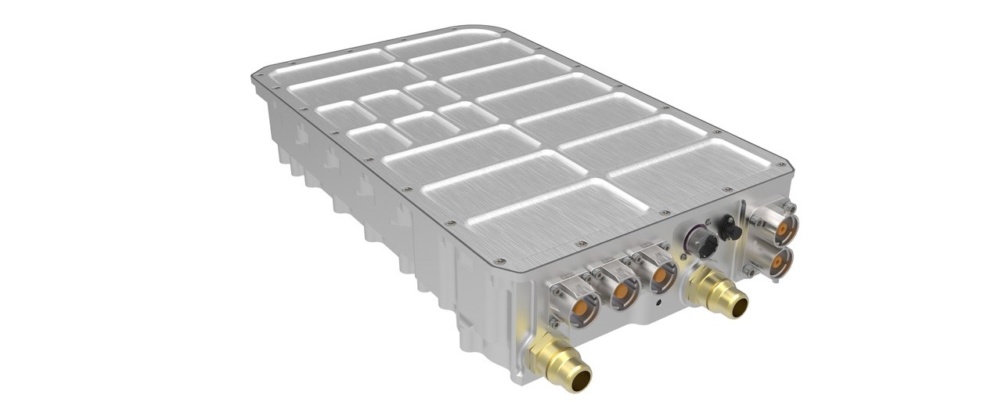If someone told you a material existed that could dramatically improve the range of an electric vehicle, yet add nothing to the price of its powertrain, you might get out of your seat. If they then added that this wonder substance naturally occurred beyond our solar system, you might understandably sit down again.
But bear with me – because this is no flight of fantasy. When used in a new generation of electric vehicles, silicon carbide has the potential to bring a step change, without any cost burden. In fact, it could even be described as ‘free’.
On the right road to automotive electric motors
Highly abundant in space, silicon carbide is essentially stardust, found on carbon-rich stars. On Earth, naturally-occurring silicon carbide does exist, but the only way you’ll come across it is in a meteorite – and in miniscule amounts.
Thankfully, global industry has a tried-and-tested route to mass-producing a synthetic version, by mixing silica sand and carbon at enormously high temperatures. Which is just as well because SiC – to give it its chemical name – brings major advances in electronic devices, offering higher power levels, lower power losses and improved overall efficiency.
How does that benefit an EV? Well, it all comes down to a component called the inverter. An essential part of an EV powertrain, inverters are the crucial interface between battery and electric motor, converting DC charge from the battery to AC to drive the motor. They also time the switching changes to adjust the frequency of the AC charge to control the speed of the motor too.
Or, to put it another way, if you imagine the battery is like a petrol car’s fuel tank and the electric motor is the engine, the inverter is effectively the fuel injection system. And the faster and more efficient the inverter is, the more efficient the whole vehicle is – which means you get more range from the battery.

Traditional inverters use insulated-gate bipolar transistors (IGBTs), which switch current at up to 20kHz, but the very latest SiC-mosfet (metal-oxide-semiconductor field-effect transistor) versions can do 80kHz. Not only is a much higher switching speed important for driving small high-speed motors used in some EV applications, but also the power density improves as the switching speed increases. Which we’ll come to in a moment.
SiC-mosfet inverters also also bring a significant reduction in total inverter loses and are smaller and lighter, allowing engineers to take advantage of aerodynamic and packaging improvements, reducing the amount of cooling a vehicle might require, too.
Factor in a power-to-weight ratio of 100kW/kg – versus 40kW/kg for contemporary IGBT technology – and you can start to see how much of a benefit this technology can bring, especially when you consider the enormous effort car makers put into optimising EVs for increased range.
In a typical high performance EV sports saloon, for example, the associated efficiencies brought by a silicon carbide inverter can reduce the size of the battery by at least 10 per cent – or around 40-50kg. While they can be twice as expensive as IGBT versions (at $2,000 per unit versus $1,000), they can reduce the size of the battery by such a large amount that the cost saving more than pays for the inverter itself.

That gives a car maker two options: pass on the cost saving to the customer (or spend it on another component) and offer a vehicle that has the same or likely better range than before (thanks to the virtuous circle of lighter weight), or keep the battery the same size and offer even more range thanks to increased efficiency.
And the more the vehicle is used, the greater the benefits – as it is with commercial vehicles. An e-truck or e-bus might easily cover one million kilometers in its life and over that time a SiC inverter could bring cost savings close to $40,000.
Right now, SiC inverters have not been adopted in the mass market because of their upfront price – but that’s about to change. And do so very quickly indeed. Passenger battery electric vehicles (BEVs) equipped with silicon carbide inverters are predicted to overtake those with traditional IGBT units by 2024 and, by 2030, 95 per cent of all BEVs will use silicon carbide. So the market is huge and growing.
At Equipmake, we’ve been developing inverters for nearly a decade – making our own gate-drivers and writing our own software too – alongside designing and manufacturing entire e-powertrains. They are a crucial part of the entire electric drivetrain system and we’ll be launching our own high performance SiC inverter very soon.
There’s no doubt this new technology will overtake demand for our existing IGBT inverters very rapidly indeed. After all, how often does an innovation arrive that genuinely gives you something for nothing. And you can even say it comes from outer space too.
Ian Foley, managing director, Equipmake










Water Sector Talent Exodus Could Cripple The Sector
Maybe if things are essential for the running of a country and we want to pay a fair price we should be running these utilities on a not for profit...